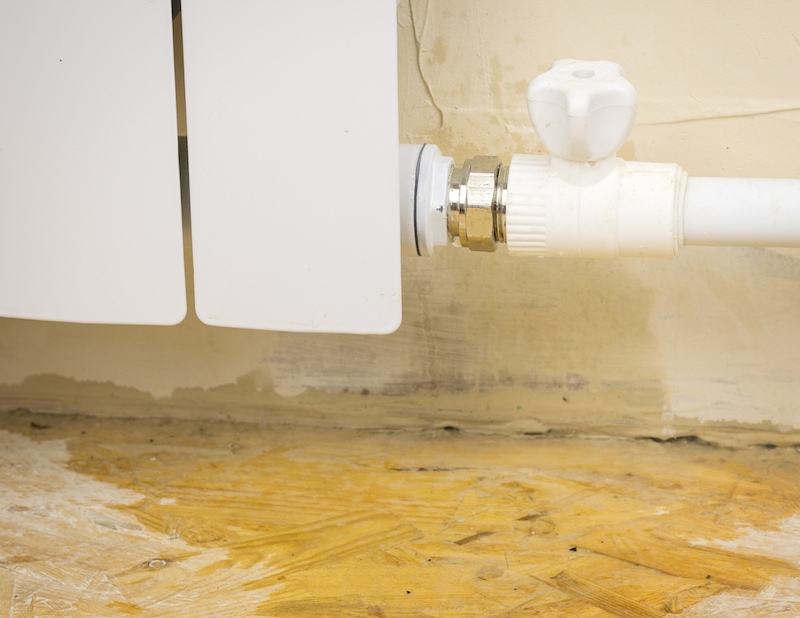The Home's Common Common Factors of Leakage: Detailed Examination
The Home's Common Common Factors of Leakage: Detailed Examination
Blog Article
How do you feel when it comes to How to detect water leaks in your home?

Leakages not just trigger waste of water but can also cause unneeded damages to your house and advertise undesirable natural development. Water leakages may go undetected because many of the pipework in our house is concealed. By looking and also comprehending for daily scenarios that trigger leaks, you can protect your residence from future leaks as well as unneeded damage. Today, we will check out 6 leakage triggers that might be creating your pipelines to trickle.
Elbowing in roots
The majority of water leaks start outside your house rather than inside it. If you observe an abrupt reduction in water pressure, state in your faucet, take time to go out and also analyze your backyard. You might observe damp spots or sinkholes in your backyard, which could suggest that tree origins are invading water lines creating water to seep out. You can have your plumber check for breach, especially if you have trees or bushes near your property.
Corroded water supply
As time passes by, your plumbing system ages as well as corrosion such as rust might begin eating away the pipelines. This could be the cause of staining or warping on your pipes. This asks for an assessment with your plumber quickly. If our plumbing system is old, think about changing the pipelines because they go to a higher danger of rust than the more recent models.
Defective Pipeline Joints
Pipeline joints can weaken over time, resulting in water leakages. If you have noisy pipes that make ticking or banging noises, specifically when the warm water is transformed on, your pipeline joints are possibly under a lot of stress.
Instant temperature adjustments.
Extreme temperature level modifications in our pipelines can create them to expand and contract suddenly. This growth and also tightening may cause cracks in the pipelines, particularly if the temperature are below freezing. If you kept an eye on how your plumbing works, it would be best. The visibility of the previously stated circumstances regularly suggests a high danger.
Poor Water Connectors
At times, a leak can be created by loose tubes and also pipelines that provide your home appliances. In case of a water links leakage, you may notice water running straight from the supply line or puddles around your devices.
Clogged Drains
Clogged drains pipes could be irritating as well as inconveniencing, but they can sometimes end up creating an overflow resulting in burst pipes. Keep getting rid of any kind of materials that might drop your drains that might block them to stay clear of such hassles.
All the above are causes of leakages but not all water leakages arise from plumbing leaks; some leakages could come from roofing leaks. All leakages need to be repaired instantly to prevent water damages.
Leaks not only cause waste of water however can additionally trigger unneeded damage to your residence and also promote undesirable organic development. By understanding as well as looking for daily situations that create leakages, you can secure your house from future leaks and also unneeded damage. Today, we will look at 6 leakage triggers that might be creating your pipes to drip.
At times, a leakage can be triggered by loosened pipes and also pipes that supply your devices. In situation of a water links leak, you might notice water running directly from the supply line or puddles around your home appliances.
How To Check For Water Leak In Your Home
How To Check for Leaks
The average household's leaks can account for nearly 10,000 gallons of water wasted every year and ten percent of homes have leaks that waste 90 gallons or more per day. Common types of leaks found in the home are worn toilet flappers, dripping faucets, and other leaking valves. These types of leaks are often easy to fix, requiring only a few tools and hardware that can pay for themselves in water savings. Fixing easily corrected household water leaks can save homeowners about 10 percent on their water bills.
To check for leaks in your home, you first need to determine whether you're wasting water and then identify the source of the leak. Here are some tips for finding leaks:
Take a look at your water usage during a colder month, such as January or February. If a family of four exceeds 12,000 gallons per month, there are serious leaks.
Check your water meter before and after a two-hour period when no water is being used. If the meter changes at all, you probably have a leak.
Identify toilet leaks by placing a drop of food coloring in the toilet tank. If any color shows up in the bowl after 10 minutes, you have a leak. (Be sure to flush immediately after the experiment to avoid staining the tank.)
Examine faucet gaskets and pipe fittings for any water on the outside of the pipe to check for surface leaks.
Undetected water leaks can happen without the home or business owner even realizing. If you suspect a water leak, but not able to find the source. It is time to contact a professional water leak detection service, The Leak Doctor.
How To Find a Water Leak In Your Home
https://www.leakdoctor.com/blog/How-To-Check-For-Water-Leak-In-Your-Home_AE197.html
As a passionate reader about Most Common Causes of Leaky Pipes, I was thinking sharing that piece of content was essential. Do you know about another person who is in the market for the niche? Be sure share it. Thanks so much for your time spent reading it.
Hot water issue? Call! Report this page